6 Ways To Prevent Onions From Bolting – Watch Out For Hot Weather
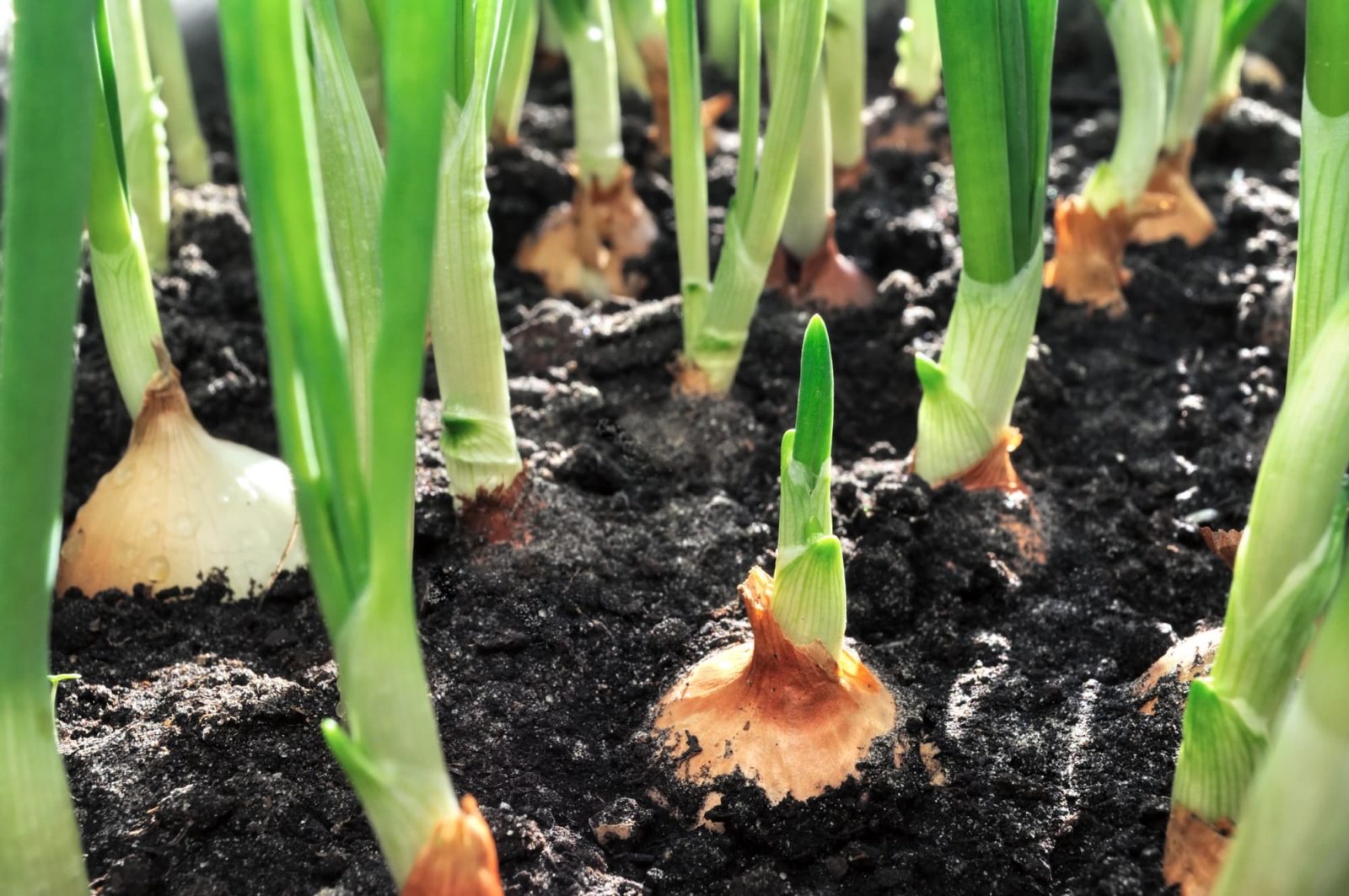
VEGETABLES > ONIONS > BOLTING
Reviewed By COLIN SKELLY

Colin is a Horticulturist and Horticultural Consultant with experience in a range of practical and managerial roles across heritage, commercial and public horticulture. He holds the Royal Horticultural Society’s Master of Horticulture award and has a particular interest in horticultural ecology and naturalistic planting for habitat and climate resilience.
IN THIS GUIDE
ONION GUIDES
Companion Planting
Harvesting
Preventing Bolting
Sowing
Bolting is the term used to refer to a vegetable prematurely going to seed by sending up a flower stalk.
When an onion bolts, I find that the bulb will not develop properly, will stay undersized and may even split.
Such an onion, if harvested, will not store as well as a fully-developed one and is more prone to rotting.
So, there are some really good reasons to prevent onions from bolting.
Why Do Onions Bolt?
The primary stressors are hot, dry summers and out-of-season cold snaps.
Some choices made by the gardener can also turn some factors into stressors.

For example, the choice of onion variety or fertiliser.
Underneath, I lay out some precautionary choices you can take to try to minimise the chances of your onions bolting and I also recommend a couple of rapid-response measures to minimise the impact of environmental stressors.
1) Avoid Planting Certain Onion Sets
Onions are typically grown from sets, which are actually first-year onion bulbs.
For this very reason, they are much more likely to bolt than onions germinated from seed.
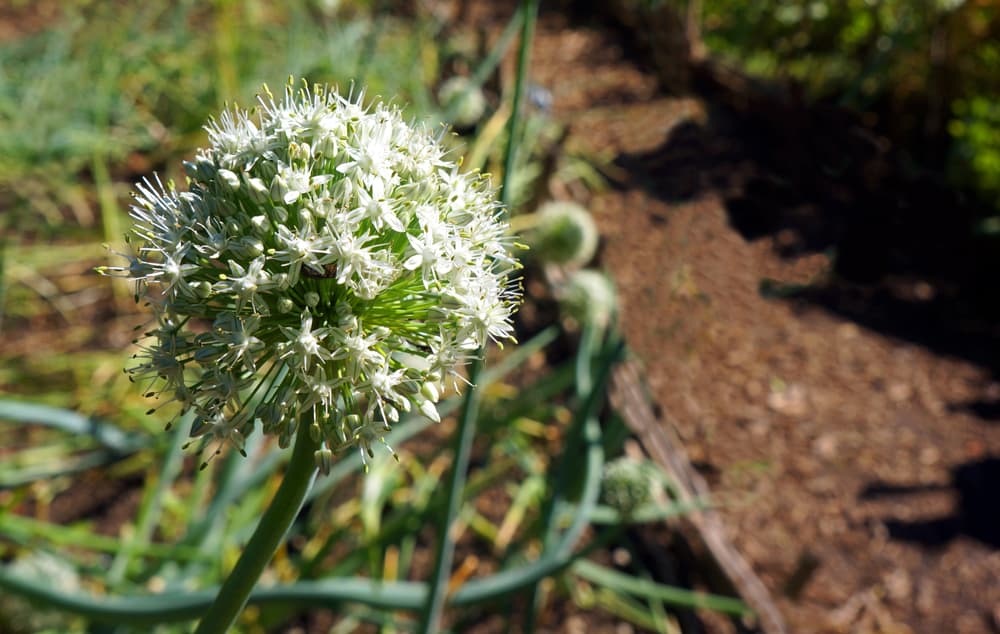
Unfortunately, it is less convenient to grow onions from seed, which is typically a two-year process.
To greatly reduce the chances of bolting, do not plant (regular) onion sets.
A very good compromise is to obtain and plant heat-treated sets which seldom bolt.
2) Plant In The Correct Timeframe
Plant sets about four weeks before the last expected frost, which is usually sometime during March or April, depending on your location in the UK.
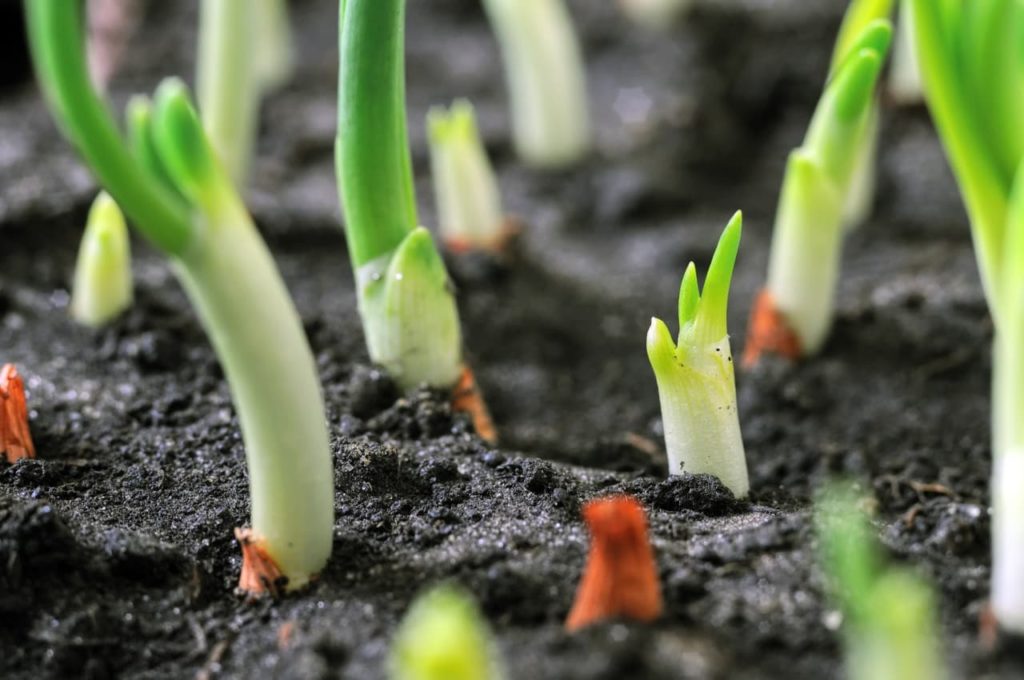
Planting too early or too late increases the chances of bolting.
3) Plant Bolt-Resistant Varieties
White and yellow onions bolt much less frequently than red onion varieties.
A few varieties are resistant to bolting, while a few have been bred specially to resist bolting.
You should be able to find the following in the UK:
- ‘Stuttgarter’
- ‘Sturon’
- ‘F1 Santero’
- ‘Walla Walla’
None of these is a red onion or a short-day type, so they tick all the boxes.
4) Fertilise Your Onions
Feed set-grown onions once or twice early in the season, but do not feed them after the bulbs have developed.
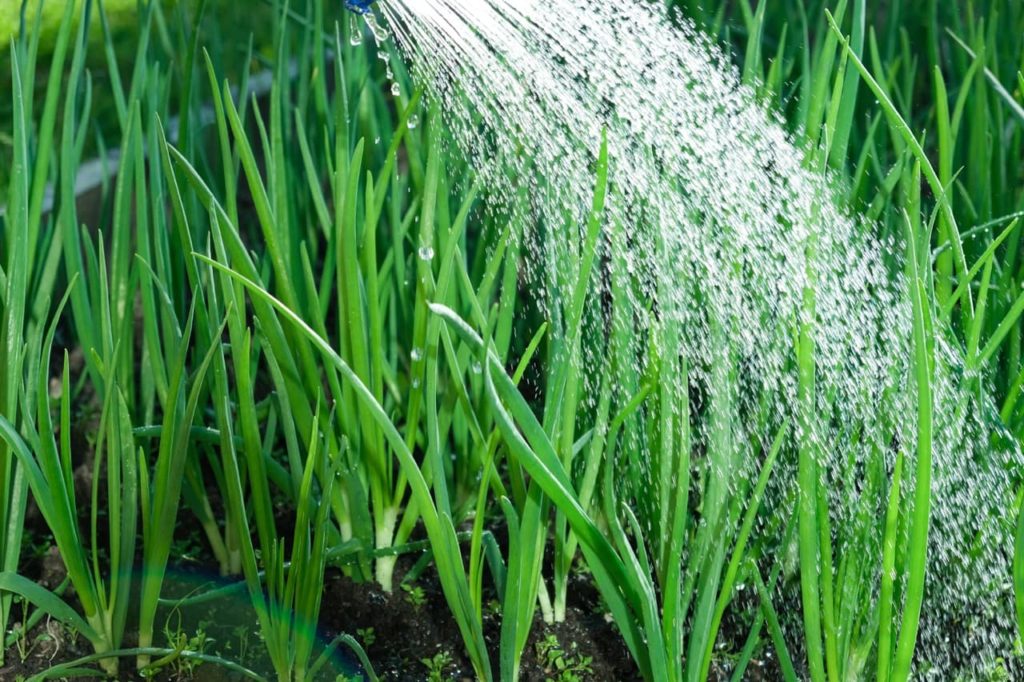
Also, do not use a balanced or high-potash formula.
Use a high-nitrogen, low-potash formula.
5) Water During Hot & Dry Weather
If you are experiencing very hot days, do not let the soil stay dry – and try to shield the plant from heat.
At the very onset of unseasonable heat take the following steps:
- Water frequently so that the soil does not stay dry for any length of time.
- Water with cool water by mid-morning.
- Lay a shallow but dense layer of mulch to conserve moisture.
“Watch out for spells of prolonged hot weather,” says Colin Skelly, a Horticultural Consultant.
“Short spells of hot weather will benefit your bulbs but keep an eye on the top inch of soil and when it becomes dry, it is time to water.”
However, keep in mind that after the bulbs have formed, these root veggies should be watered conservatively, as overwatering can cause the bulbs to start rotting, even as they are developing.
6) Protect From Cold Snaps
If you are expecting a cold snap or suddenly find yourself in one, shield the onion plants from the cold.
Do so even if a cold snap arrives early in the season.
At sundown, put horticultural fleece or a simple natural-fibre blanket on the ground over the onion plants.
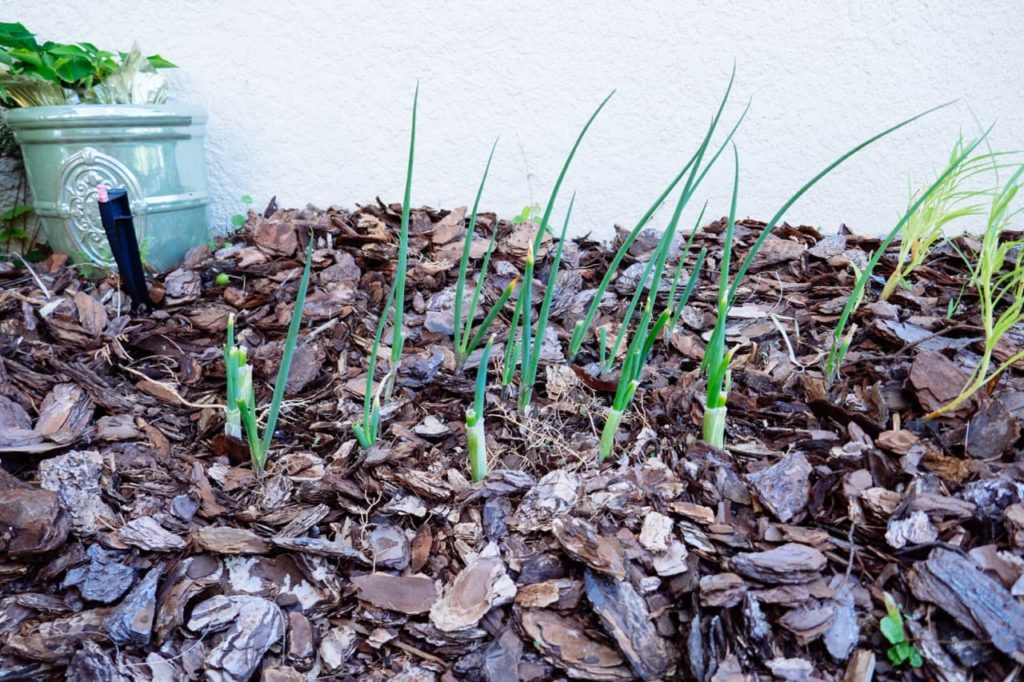
After sunrise, when sunlight is falling over the planted area and the soil is warming up, remove the fleece.
Do not remove it earlier; allow the soil to warm up.
During an extreme weather event or if the days are overcast, you might need to keep the plants covered.
What If My Onion Has Already Bolted?
Finally, what can you do if your onion has already bolted?
If the stalk with the bud is on its way up or has already flowered you will have to forget about consuming the onion, but you should look forward to collecting onion seeds!
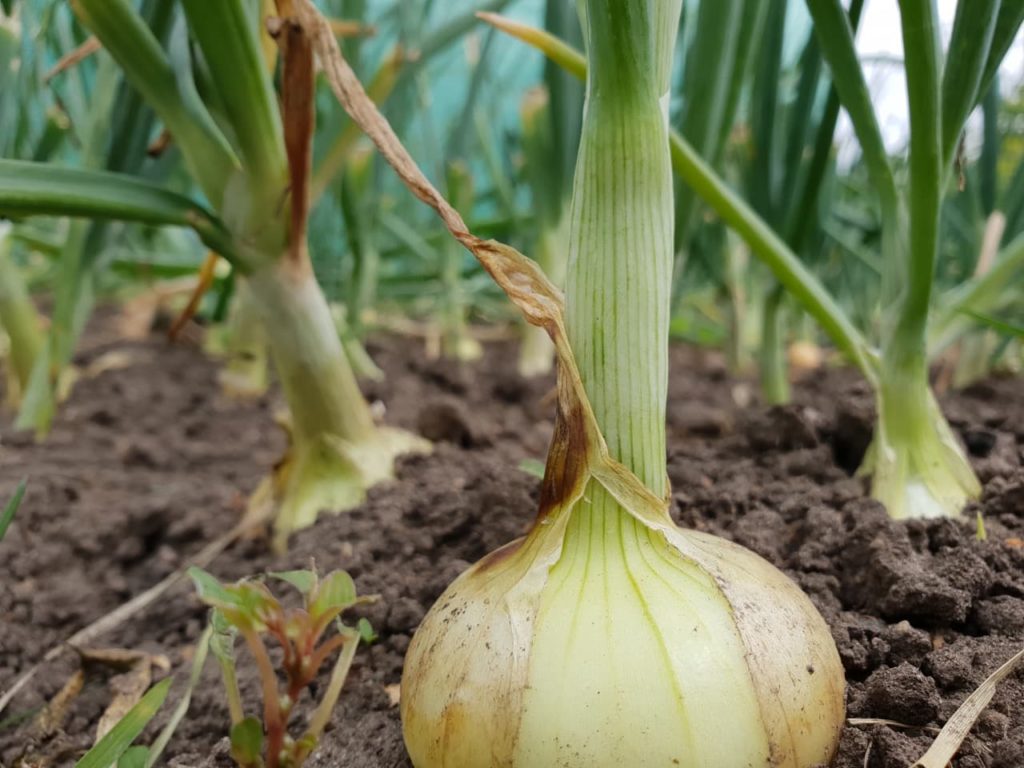
However, if the stalk is only just shooting up, then the onion is salvageable.
Cut the stalk off at its base. Promptly dig up the onion and, as you should not try to store it, use it for pickling.

